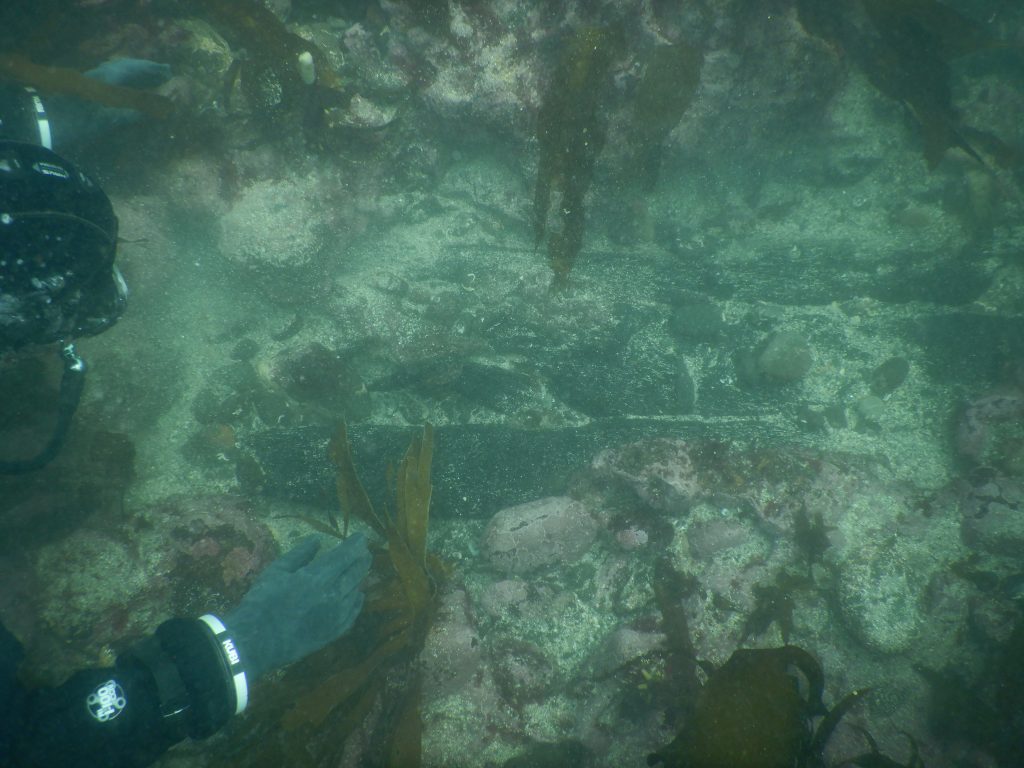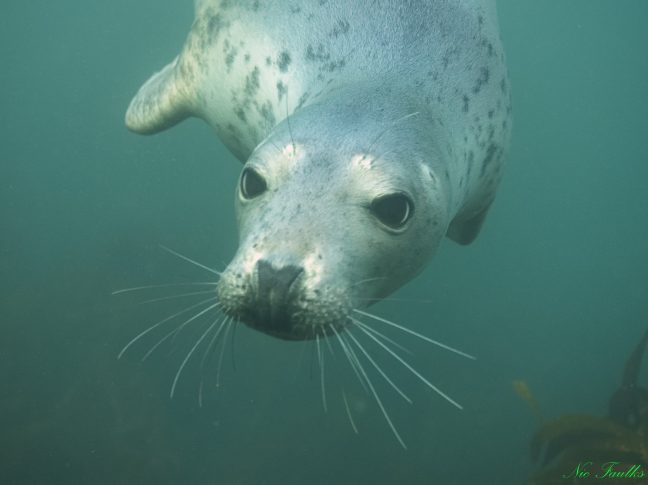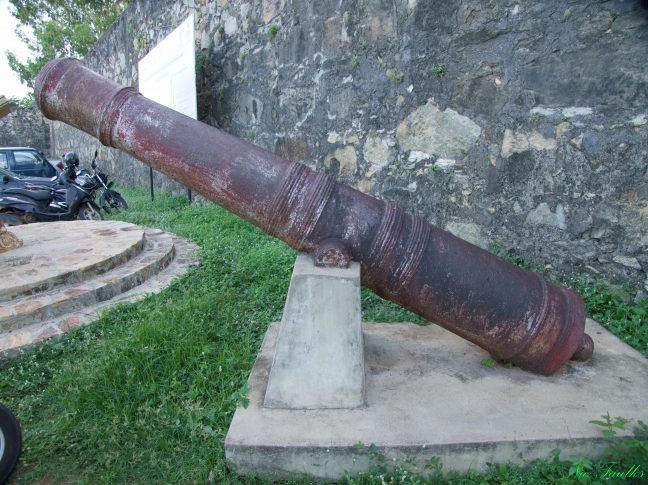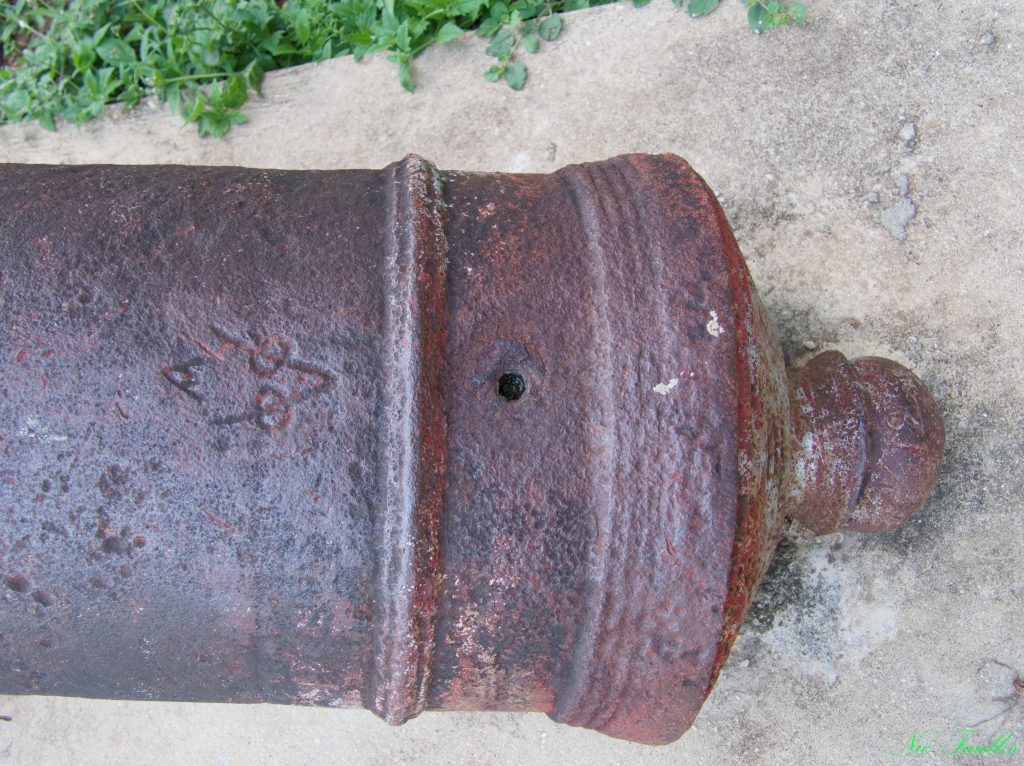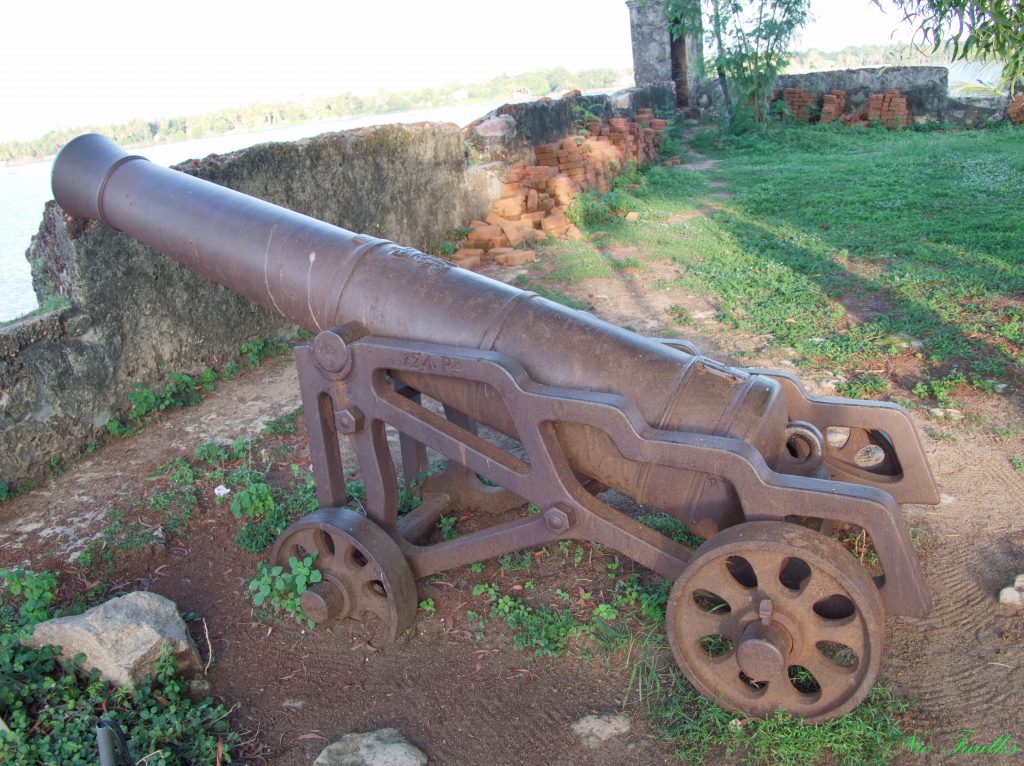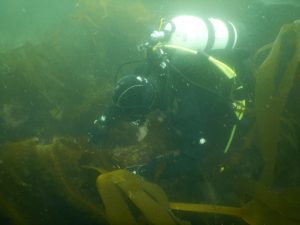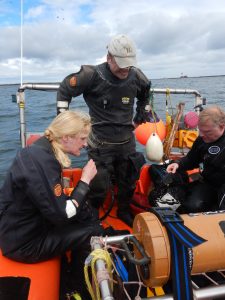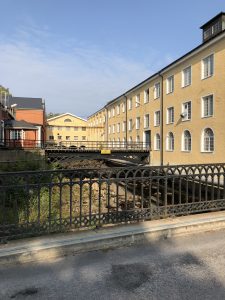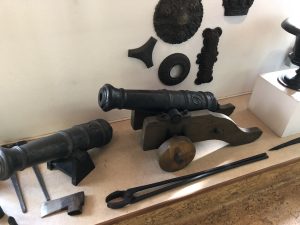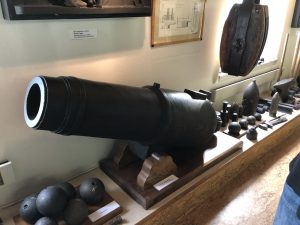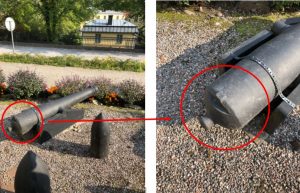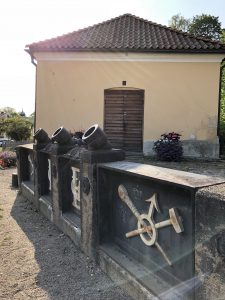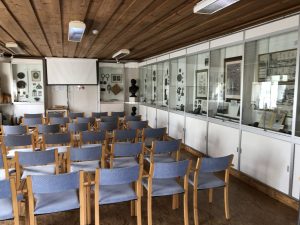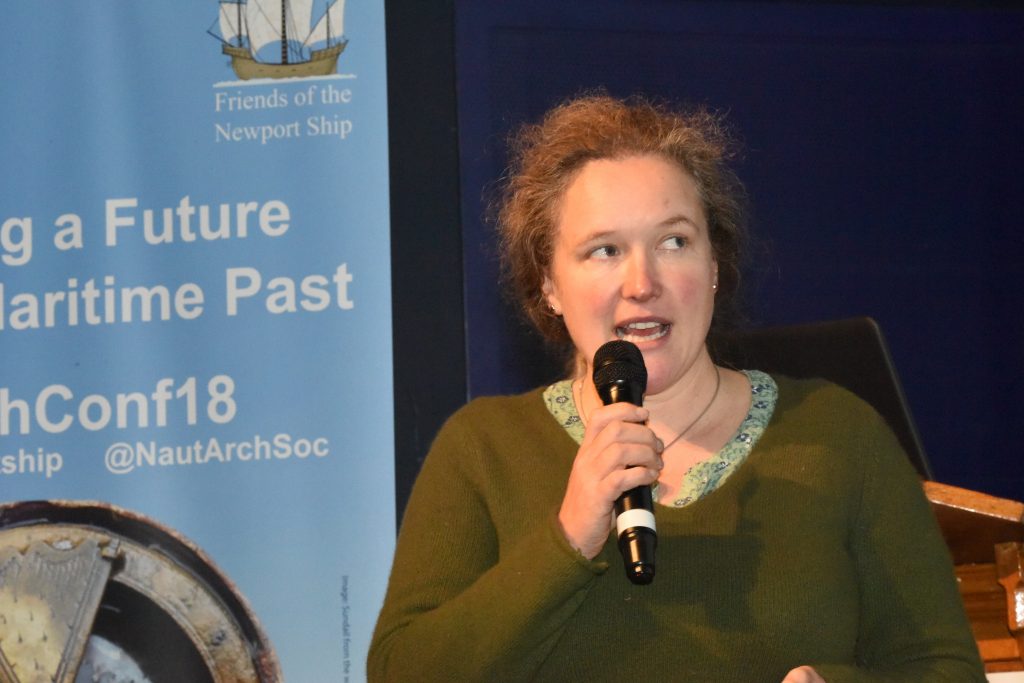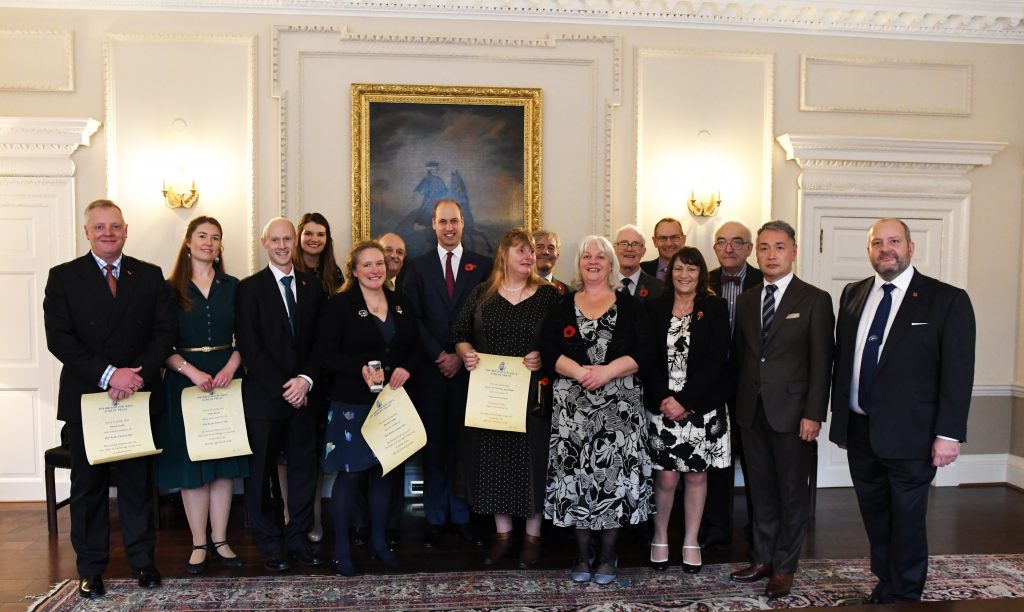Gun Rocks - 2023 Update

The late summer season can often be the best time to dive the Farne Islands. We did this dive on the 3rd September 2023. Most people are focussed on the seals, but the weather can be kind, the sea calm and like today, blue sky and sunshine. The water temperature was about 14c too, which is great for a nice long dive in a dry suit!
Although advertised as a club dive, there was just me and Tiago; so we planned to have a very chilled day onboard Glad Tidings. As we headed out to the islands I could see that we were on an ebb-tide. So I jokingly said to Michael, shame we can’t dive Gun Rocks, it has been 9 months since we last dived there. Oh yes you can, came the reply.
So in all these years, I have always thought that the ebb tide swept the rocks, meaning that you couldn’t dive them. But it appears that due to the reef that runs from the rocks, south towards the southern end of Staple Sound, the south north ebb tide is in fact deflected away from Gun Rocks, leaving a large calm eddy! I just can’t believe I never realised this. It means that the site is now diveable at nearly all states of the tide, with care.

So Michael expertly reversed GT7 up to Gun Rocks, with the tide ripping up Staple Sound, but as he predicted, the site itself was calm, no tide at all. We jumped in and went down to see the cannon, our old friends, each one we know…. erm hang on, where are they?
After an embarrassed 10 minutes of swimming around getting our bearings we finally found the first cannon. Recognised it then we were able to work out where the rest were.
It really is amazing how quickly kelp regrows and recovers. The site had quite a few different types of kelp, but notably, a lot of the upstanding kelp like Laminaria hyperborea and Saccorhiza polyschides, but now there is a lot of sugar kelp Saccharina latissima, lying over the seabed, covering all of the cannon.
After a bit of sign language between me and Tiago, we decided to start clearing the kelp off some of the cannon, so we could check that they were still there, and make them easier to find for the other divers.
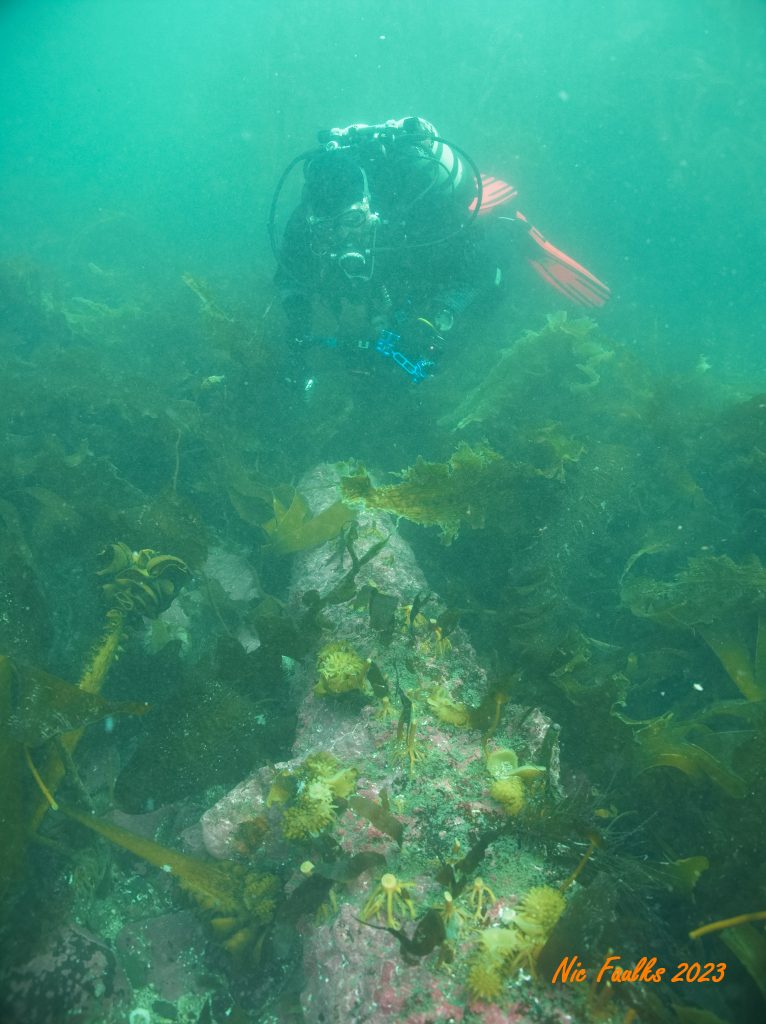

You can see from the pictures above that the cannon were well covered with life. Sea weeds, urchins, crabs and lots of other like. The yellow blobs you can see aren’t sponges, they are the “holdfasts” of the kelp, the one with little legs is that of forest kelp Laminaria hyperborea, and the ones with the knobbles are the holdfasts of furbellows Saccorhiza polyschides. Sadly no octopus this time, but lots of crabs and a few lobsters.
So after cleaning off about seven cannon, and realising that there really was no current running, we decided to go to the edge of the rock, just before it drops off from 8m depth, down in to the sound. We finned west, looking down to see if we could find the outlier cannon, that sits on the edge, sadly we didn’t see it, but as we popped our heads out of the kelp above the drop off, we realised that there was still no current….. so we headed in to the sound.


The dive west from Gun Rocks, up the reef that forms part of Staple Sound was lovely, very calm with no current at all and about 8-10 metres of visibility. We saw so many dead man’s fingers, hydroids and anemones, some with such beautiful colours.
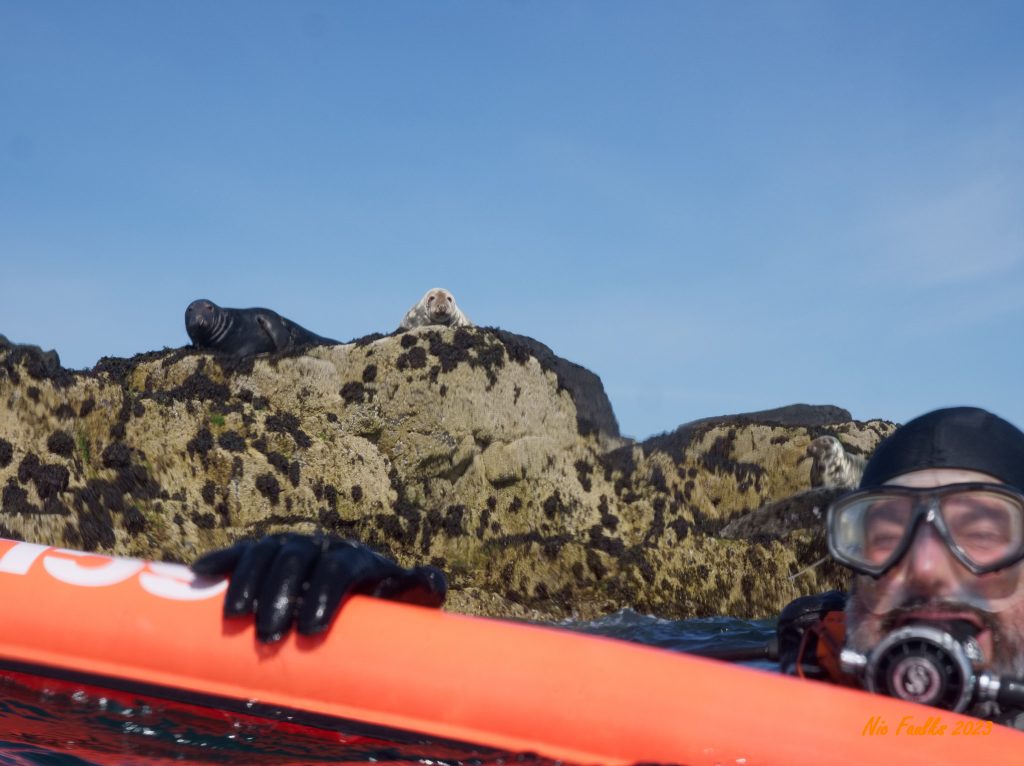
Between the rocks we found large horse mussels, and the odd scallop (shh, don’t tell anyone). The holes and gaps between the rocks are all guarded by various species of squat lobster, and many many prawns.
Just to add even more colour, the scorpion fish were looking great too, red, brown and various other combinations. I often wonder if they are slightly chameleon like and can change colour depending on substrate and mood…. who knows?
After 60 minutes, we decided it was time to come up, so deployed the DSMB, and ascended gently up to our 3 minutes safety stop at 6 metres, then up to the surface, to be greeted by two grey seals, sunshine and a large mug of tea onboard Glad Tidings. A great first dive of the day! But for this blog, the only dive I am going to write about. 🙂


